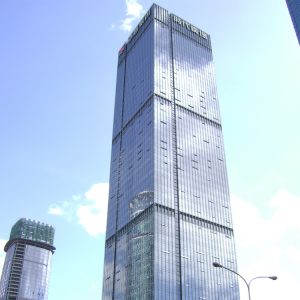The Role of Glass in Curtain Wall Systems
In the modern curtain wall design, glass is the main boundary material between the inside and the outside of a curtain wall. In other words, glass gives the possibility to see what is outside, and also provides natural light, as well as separate from the weather elements. Besides, it also gives us thermal comfort or privacy when required.

For a long time, glass is undoubtedly one of the main components of curtain walling. It carries almost all the key aspects in its processing: safety, aesthetics, and thermal. In the modern commercial buildings, aluminium curtain wall system is generally used as a way to express an architectural intent, an idea, or even an economical status. Aesthetically, the quality of the glass processing gives the building facade the ultimate touch. Nevertheless, as a barrier, glass is not ideal because it does not fit the well-design curtain wall’s characters. Consider it has a high thermal transmittance value (compare to a solid wall), it is brittle, not breathable, and is not safe when it breaks! Glass fabricators in the last decades have provided a great range of glazing solutions that can combine performance and aesthetics in such way that the possibilities are almost infinite in a variety of applications. Another relevant contribution of glass is its contribution to sustainability. In most cases, glass can help to reduce energy consumption and even produce energy by itself. In practical curtain wall construction, curtain wall costs are mainly driven by the glass type and its required performance.
Types of Glass for Best Performance
In recent years, energy-efficient glazings are widely used in buildings to achieve sustainable running costs. There are three popular types of high performance glasses:
1) The low-E glass allows light to pass through while keeping the heat away. These also help in the protection of the interiors from UV and IR rays. The low-E glass provides thermal comfort by keeping the warm air inside in winters and not letting cool air escape in summers.
2) Solar control glass is a special oxide-coated glass that transfers less heat and glare inside while allowing ample sunlight. These protect the interiors from IR rays while reducing the need for artificial lighting.
3) Solar control low-E glass blocks solar radiation while providing optimum thermal insulation without overheating or overcooling. Low-E glass solely tends to overheat under the direct solar glare, exactly where solar control low-E glass helps. These are generally used in glass curtain walls to decrease the buildings’ air conditioning cost, resulting in high energy efficiency.
Tel: +86 18202256900 Email: steel@tjdpbd.com









